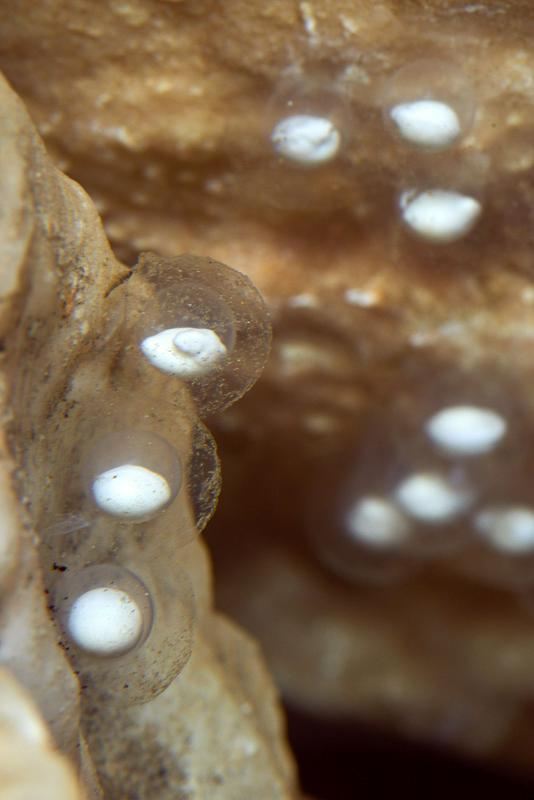

The two in-house biologists assumed that the olm just wanted to rest, but they realized that it had at least three more eggs in its abdomen. Such behaviour might be natural, but the biologists are not exactly sure, as they haven’t had the opportunity to observe the phenomenon over a sufficient period of time.
After resting for three days, the olm returned to its eggs. It is no longer as agitated as before, preferring instead to lie around. This is another indication that the female olm is exhausted from laying eggs in a cold and dark environment, and from trying to fight off the other olms.
Longest egg-laying period ever recorded
The behaviour of olms, who usually reproduce once every ten years, never ceases to amaze biologists. They had assumed that olms lay eggs for about 3 weeks, but in this case it took the olm about 2 months to lay its eggs.
The above picture shows the first egg the olm laid. The top one shows the first signs of a head, back and tail forming. The bottom egg has just undergone division, whereas the others don’t show any change yet.
Little is known about the reproductive behaviour of olms. The first time an olm was seen reproducing in the Postojna cave was in 2013.
Olms studied in a lab in Kranj
Gregor Aljančič, the head of the Tular Cave Laboratory in Kranj, has been studying the species since 1989. He first saw an olm laying eggs in 1993, and he has seen olms lay eggs a total of 20 times. We asked him about the reproductive behaviour of the species.
Since its inception, the laboratory has only managed to raise five white olms. Not one black olm has survived. Aljančič has been observing olms ever since he was a child – after he was introduced to the species by his father. He stressed that we should focus on more than just their reproductive behaviour: “The first thing we should point out is that olms are a critically endangered species. Seeing them reproduce isn’t as sensational as it might seem at first. What would be really amazing is if people realized how endangered groundwater is, the species’ natural habitat. We need to raise awareness about this issue, and we need to change our attitude towards the way we treat the Slovenian Karst – a vulnerable region that is the source of our drinking water. The primary purpose of our research is to learn how to preserve the species.”
P. B.; translated by D. V.

































































